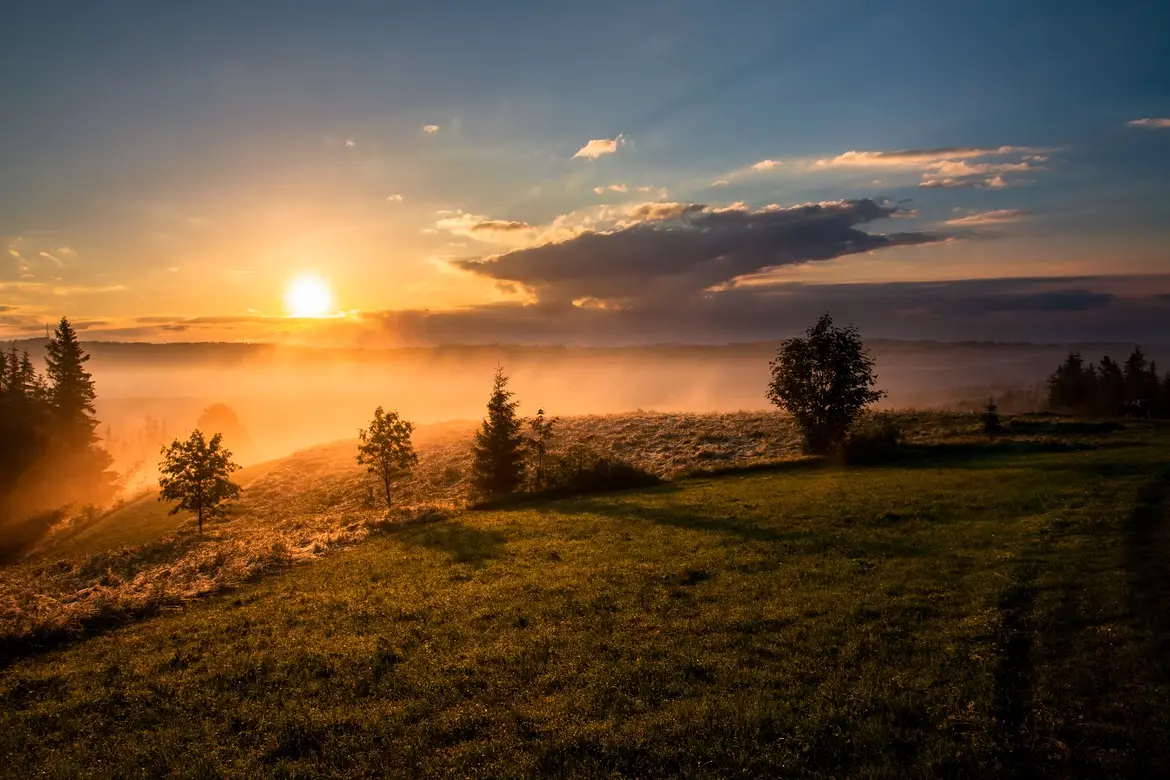Other than the Sun, this question has risen in many people’s minds too. People often think, where is the first sunrise in the world? And where does it set last?

One can either be in the Northern Hemisphere or the Southern Hemisphere. The Sun rises in the East and sets in the West for us. But which country gets to see the Sun first at the start of a new day? And which country witnesses nightfall last at the end of each day?
Well, look no further for the answers. Stick around and let’s find out!
Which Country Catches A Glimpse Of The Sun First?
It was initially believed that New Zealand was the first to witness the Sun and the sunrise can be seen the earliest from its North Islands. But while the East Coast is honored to meet the Sun first every day, the actual location remains more specific.
No, it is not Gisborne, a city located on New Zealand’s East Coast. It is Caroline Island which lies in Kiribati at the Easternmost tip of our planet. This is an island country located near the Pacific Ocean.
Yes, Caroline Island is the first country to see the Sun every morning despite many other countries having their clocks set ahead of it. In these countries, the Sun might set earlier each day.
Why Did This Happen?
Back in 1995, Kiribati had a time difference of 24 hours with its Eastern and Western island groups. It had only four days in a week when both these sides experienced simultaneous weekdays. This meant that offices and the government could conduct business meetings only on these days.
This caused an economic nuisance for people and a lack of efficiency in work schedules for the population. Finally, on 1 January 1995, Kiribati’s president announced that it would move Eastwards henceforth. This meant that it would be the first nation to see the sunrise every morning from the start of the third millennium.

Did you know that Caroline Island was renamed Millennium Island back in the year 2000 to celebrate this occasion? It put an end to the nuisance and resulted in Caroline Island being the first to greet the Sun every morning.
Summer Solstice
The summer solstice is the longest day of the year. People often wonder if this is because the Sun rises early or sets late. It occurs during June and is witnessed all over the Earth predominantly.
This phenomenon occurs because the Sun rises in the farthest part of the northeast and sets in the most distant part of the northwest. It changes its rising and setting points slightly each day and begins to move South after the longest day.
During the fall of the equinox, the Sun goes back to normally rising in the East and setting in the West. The countries that face the first sunrise and last sunset are not affected by this change and continue to see the Sun respectively.
Where Does The Sun Set Last Every Day?
It has been established that the Sun rises in the easternmost part of the world every morning. So it makes sense that it sets in the westernmost part every evening. This is none other than Attu Island, located in Alaska.
Attu Island is known for its battle during the Second World War and has been uninhabited for over a decade. It is notably the largest known uninhabited island that is politically a part of the United States. Attu Island witnesses the sunset last every day, unlike Caroline Island, which sees the first sunrise in the world every day.
The Controversy Behind The First Sunrise
There has always been a controversy about which country first sees the sunrise. This is due to the constant shift of the international dateline. In 1995, when the islands of the Kiribati group were moved to the eastern side of the dateline, it witnessed a completely new timezone.
In 1999, Tonga (a country in Oceania) followed suit and introduced daylight saving. This was followed by Samoa making a move in 2011. Samoa used to be the last place to see the sunset in the world. This meant that the people of Samoa were the last people to see the end of the day in the whole world.
Many countries have been shifting their places and changing their datelines. It is also hotly debated that the East Cape is the first to see the first sunrise every morning. People visit the East Cape Lighthouse to witness the dawn breaking every morning.

While it is clear that Kiribati and Tonga welcome the Sun every day, it might keep changing in the future. It is safe to assume that the easternmost countries see the Sun first and the westernmost countries see it last.
Frequently Asked Questions
What Time Is The Earliest Sunrise?
The earliest sunrise usually occurs around June in North America and Europe. This is also the time of year when the summer solstice occurs. It denotes the longest day of the year when the Sun either rises early or sets very late.
Why Are Summer Days Longer Than Winter Ones?
This is because the Earth is tilted towards the Sun and the days get longer and much hotter. When the Earth tilts against the Sun, we experience the winter season and shorter days. This is also when Australia and countries on the other side of the world face summer and experience long days.
Is New Zealand The First To See The Sunrise Every Day?
While this is a possible assumption, it is the Kiribati islands that greet the Sun every morning. They are at the easternmost tip of the Earth and are the first to see the sunrise apart from Tonga and Samoa.
Summing Up
The Kiribati islands may welcome the Sun every morning, but the fact is still heavily debated. Due to various reasons, countries continue to change their datelines and timezones while shifting their positions.
As they keep moving to the East, they face the Sun earlier each day. Kiribati, Tonga, and Samoa see the first sunrise in the world every day and Attu Islands see the Sunset last every evening.
Well, whether we lie in the East or the West, we can’t deny that science is the best! And it goes without saying that despite the hot debates, a lot of us don’t even wake up in time to see the sunrise. Why don’t you try catching one of the earliest sunrises in the world on your next trip?
